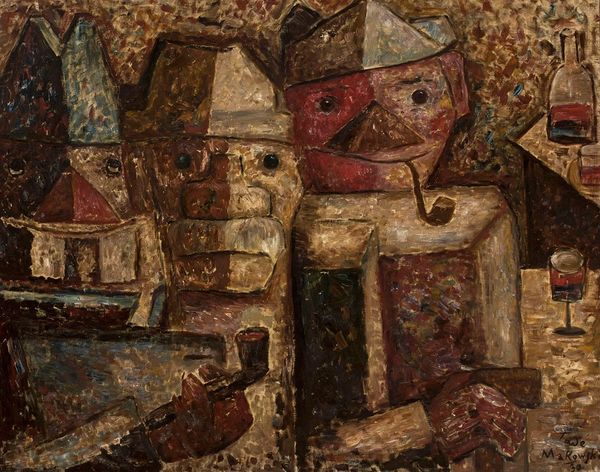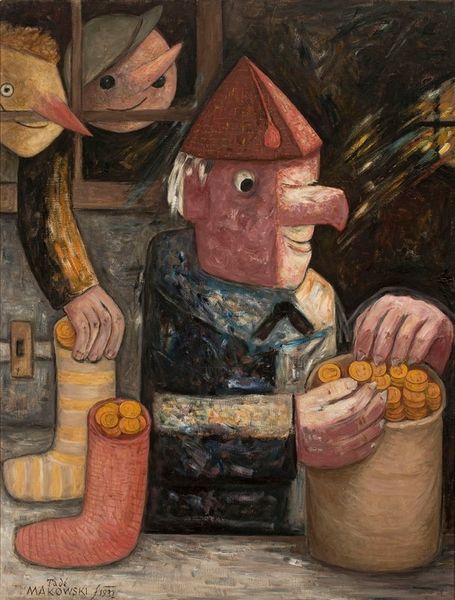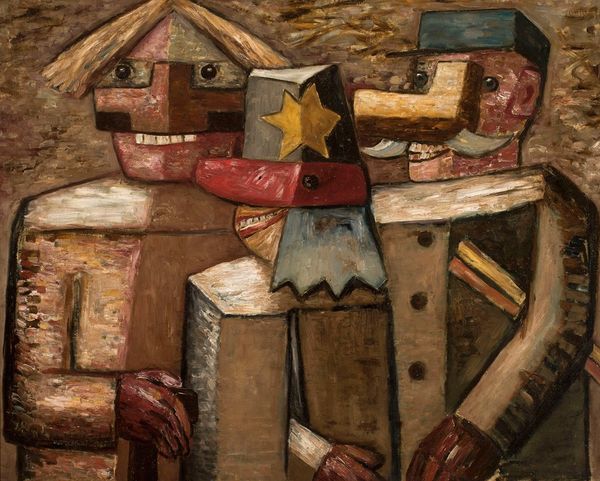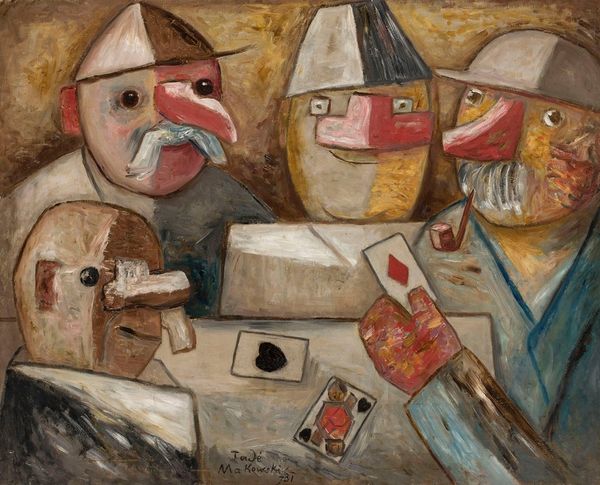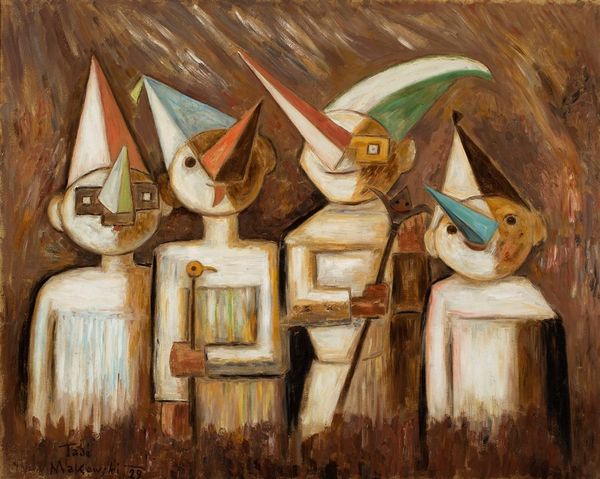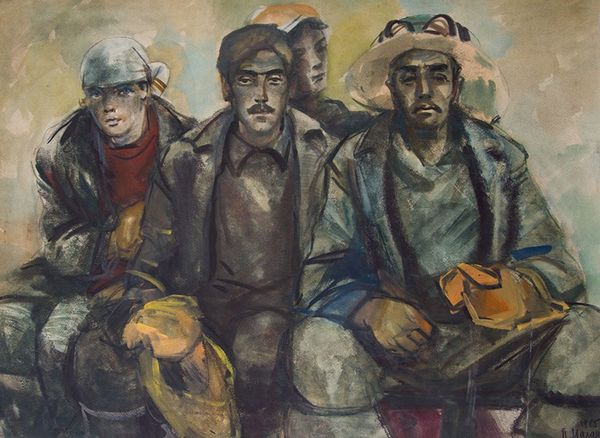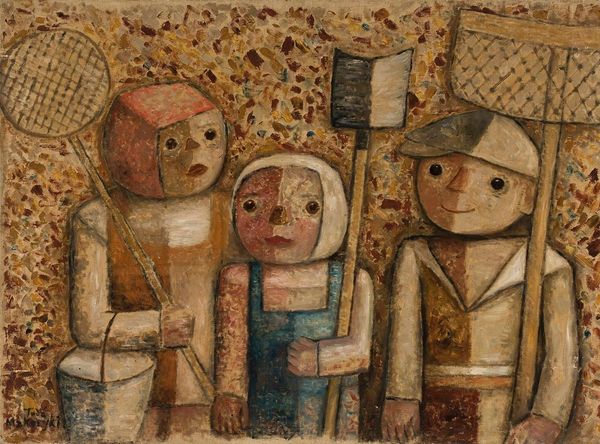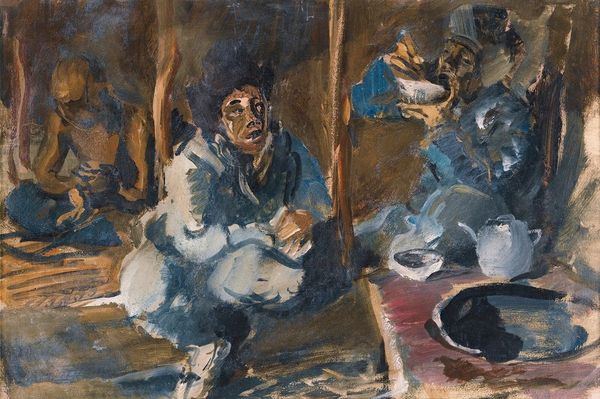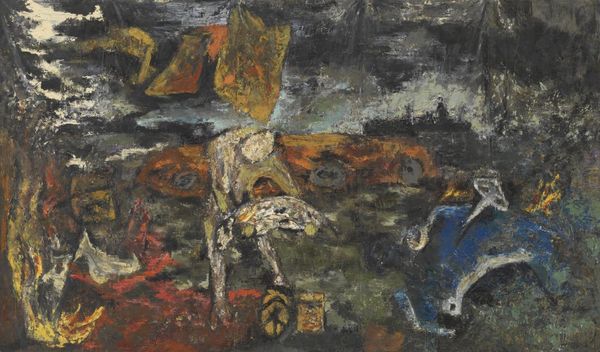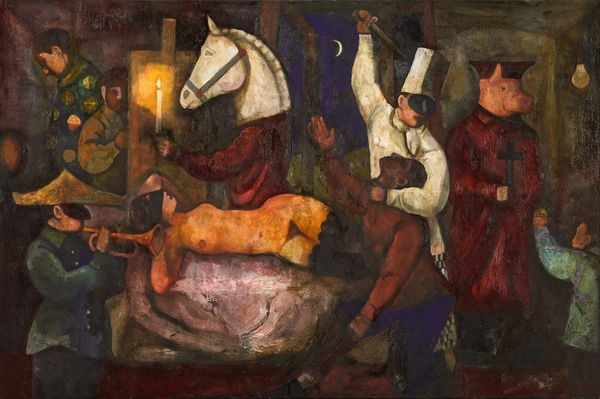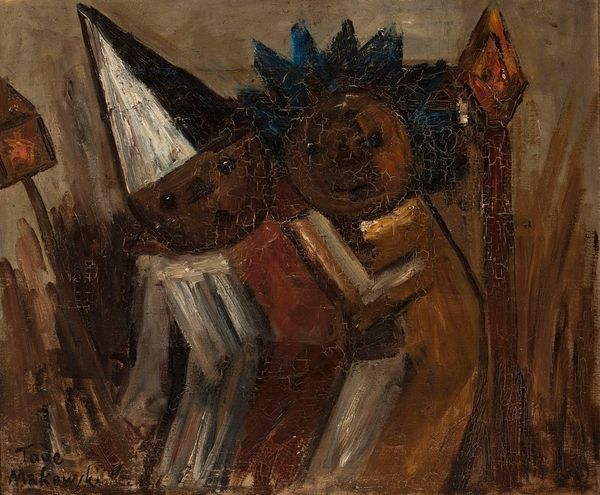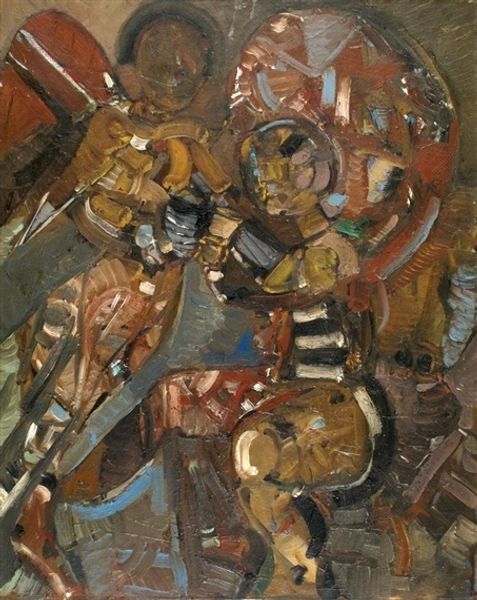
painting, oil-paint
#
portrait
#
painting
#
oil-paint
#
figuration
#
abstract
#
oil painting
#
expressionism
#
genre-painting
#
expressionist
Copyright: Public Domain: Artvee
Curator: Here we have Tadeusz Makowski's "Bagpiper," painted in 1929. Editor: It has an arresting rawness, doesn't it? The almost geometrical structure of the faces—the interplay of cubes and triangles, painted in oil no less—makes a powerful, slightly unsettling statement. Curator: Indeed. Makowski often looked to folk art for inspiration, particularly the simplified forms and direct emotional expression found in children's art. You can see this in the almost mask-like quality of the figures, particularly how their eyes stare blankly, their features slightly flattened. These figures almost act as conduits, tapping into archetypes of folk memory and celebration. Editor: It’s intriguing how the instruments almost blend with the bodies, as if extensions of them. I am compelled by the artist's decision to integrate them into the composition so cohesively; the vertical lines emphasize their uniformity and harmony as figures. Curator: It's important to recall Makowski’s broader engagement with social commentary and a subtle critique of idealized pastoral life. The bagpiper, historically associated with joyous communal celebrations, appears almost somber, burdened. Editor: I agree, their expressions don’t portray happiness, rather solemn concentration. See the restricted palette; umbers and ochres dominate. Even the clothing uses colors that hint at a deeper meaning beyond basic representation; the shades suggest an air of mystery. Curator: This muted color scheme adds to the painting's psychological weight. Perhaps it is that Makowski is not merely representing folk figures, but imbuing them with the weight of tradition and cultural identity. It reminds us of those deeply embedded cultural narratives that we access. Editor: Certainly, there's more than meets the eye at first glance. The geometric abstraction interacts powerfully with the theme. One cannot separate that technique from that underlying idea of culture being a lived experience of social engagement and communal memory. Curator: Yes, indeed; Thank you for contributing your expert analysis. It's pieces like these that invite deeper introspection and give clues on what visual culture will become! Editor: It's been my pleasure. "Bagpiper" offers so many complex interactions between its composition and history to unravel. I’ll be sure to remember these images.
Comments
No comments
Be the first to comment and join the conversation on the ultimate creative platform.
